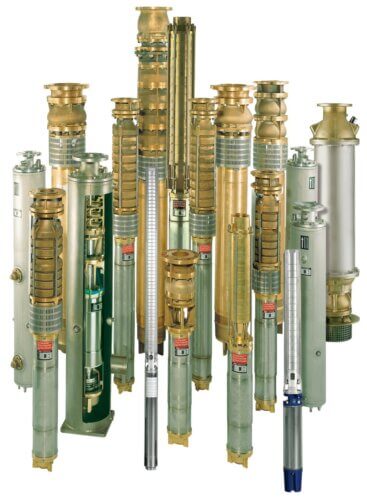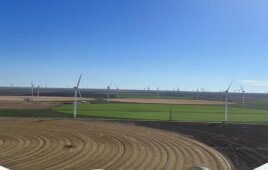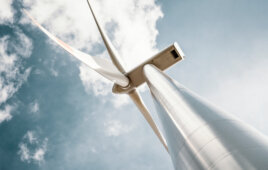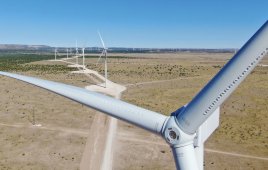Decarbonizing the global energy supply requires a renewable energy mix to replace more traditional power generation. Offshore wind is a key component of this energy transition. This article discusses the engineering challenges associated with offshore wind development and explains the role that flow control equipment can play in improving operations on wind turbine installation vessels (WTIVs) and submersible platforms.
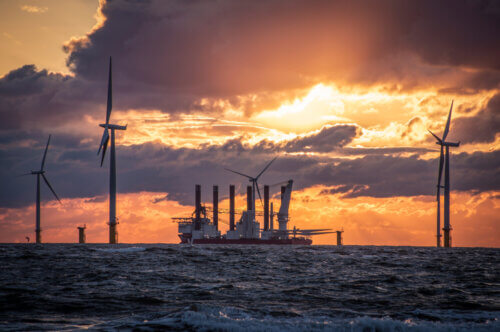 Bigger turbine challenges
Bigger turbine challenges
The first offshore wind farm comprised two 2-MW Vestas wind turbines with a rotor diameter of 66 m, sited less than 2 km from shore on monopile foundations in about 10-m water. Twenty years later, offshore wind turbines are typically rated at over 10-MW with rotor diameters of 150 to 164 m. It is predicted that by 2030 the industry will be deploying 20-MW turbines with rotors up to 300-m in diameter.
This growth in turbine size is, in part, a consequence of the ‘easy’ sites – close to shore and with relatively shallow waters – being fully developed already. Offshore wind farms are therefore moving further off the coast, even though greater water depth can impact foundation size and vessel suitability. These next generation turbines need a crane capacity of 2,500 to 3,500 tons to get them upright (compare this to 500 tons in 2005 when the first jack-up was deployed for offshore wind).
More than quadrupling tonnage requirements means that essential vessels such as jack-up rigs, self-elevating heavy lift crane barges and WTIVs must be able to cope with the additional strain of transporting and erecting these giant turbines.
The role of flow control
Reliable flow control equipment plays a significant role in the successful deployment of offshore wind turbines and other deep-water structures. Raw water (seawater) in sufficient quantities is critical to various activities, including drilling, firewater duties and providing ballast on semi-submersible structures.
Maximizing operational life and minimizing total cost of ownership of critical flow control systems is paramount. The electrical submersible pumps (ESPs) on which these systems depend need to be specifically engineered for seawater service. For example, the S&N Pumps range of ESPs from Celeros Flow Technology features high-grade construction using corrosion-resistant materials such as stainless steel. A Duplex material grade design is also available. These pumps can be oriented horizontally or vertically and are available in diameters of between 4 and 24 in. Equipped with powerful motors up to 750 hp, these pumps can achieve flow rates of up to 4,500 gpm.
In addition to constant exposure to harsh and corrosive conditions, ESPs can also be susceptible to blockages caused by marine growths, including seaweed and crustaceans. If left unchecked, such growths can create a thermal barrier around a pump motor and reduce the amount of heat that can be dissipated. Consequences include accelerated corrosion (such as erosion, pitting and cavitation), reduced fluid flow throughout the piping of the vessel or rig, and adverse increases or decreases in turbulence at pump intakes. These biological blockages are expensive and time consuming to remove, and, in severe cases, entire sections of pipework may need to be replaced.
Bio-fouling prevention systems such as the SNSAFE from Celeros Flow Technology provide a solution. This system comprises an anode cage assembly which attaches to the motor housing of an electric submersible pump or the suction of a vertical turbine pump. The system delivers an impressed DC current from a power-converting control panel to strategically placed copper anodes in the seawater system. The passage of the DC current through the copper anode releases copper ions into the seawater flow at a predetermined rate to deter the entry and growth of fouling organisms. Deployed strategically, this comprehensive bio-fouling prevention system can significantly improve pump service life.
Reel benefits
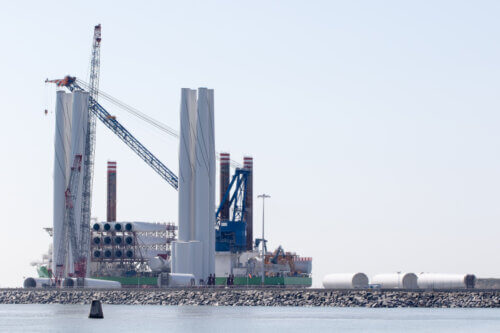 ESPs may also form part of a pre-loading reel system that provides a means of storing, lowering and retrieving a hose to secure a reliable supply of raw water. A complete seawater lift system consists of a reel with the hose, power cable, safety cable and a submersible pump/motor with all necessary controls. The hose runs below the ocean surface to deliver seawater to an elevated offshore structure.
ESPs may also form part of a pre-loading reel system that provides a means of storing, lowering and retrieving a hose to secure a reliable supply of raw water. A complete seawater lift system consists of a reel with the hose, power cable, safety cable and a submersible pump/motor with all necessary controls. The hose runs below the ocean surface to deliver seawater to an elevated offshore structure.
Each system is designed to mount directly to the main deck with removable anchor pins or by welding. This is an improvement to the conventional approach of mounting the pump in the leg of the crane or platform and makes deployment quicker and easier. Hose reels also eliminate the need for removing manifolding piping with the crane. However, these systems do have one weakness: the hoses can stretch, puncture or fracture, and this damage can lead to reel system snagging and related delays in deployment. In an industry that relies on specific time slots that are dictated by the limited availability of vessels and crew as well as weather patterns, failure of a hose system can be extremely expensive and cause major project delays.
Celeros Flow Technology offers a solution that minimizes this risk. The E-Z Fit Reel System from S&N Pumps features a hose with reinforcing wire along its entire length. This reinforced hose will support the combined weight of the pumps, shroud and full water columns, eliminating hose stretch and extending hose life. The reinforcement of the hose is complemented by a custom engineered roller deployment system that intuitively maintains the radius bend of the hose throughout deployment and retraction. The E-Z Fit systems are easily retrofitted to an existing vessel or supplied for new construction.
In summary
The economic viability of offshore wind is dependent on many complex factors, including continued political will, suitable construction sites and the ability to develop them economically. The trend toward ever larger wind turbines means that flow control equipment must continue to keep pace, in terms of performance and reliability, to ensure the global industry can deliver the energy transition.
 Iulian Maciuca is Industry Sector Manager – Renewables for Celeros Flow Technology. He trained as a Mechanical Engineer with a specialization in Automotive Engineering – Vehicle Dynamics, in which he holds a bachelor’s degree. He has almost two decades of sales and business development experience, 14 years of which are at international level, including experience of air and gas handling, pumps and hydrogen fuel cells. Iulian is passionate about hydrogen fuel cell mobility and carbon capture.
Iulian Maciuca is Industry Sector Manager – Renewables for Celeros Flow Technology. He trained as a Mechanical Engineer with a specialization in Automotive Engineering – Vehicle Dynamics, in which he holds a bachelor’s degree. He has almost two decades of sales and business development experience, 14 years of which are at international level, including experience of air and gas handling, pumps and hydrogen fuel cells. Iulian is passionate about hydrogen fuel cell mobility and carbon capture.
Filed Under: Featured
